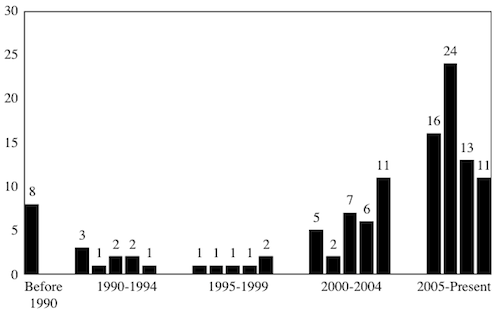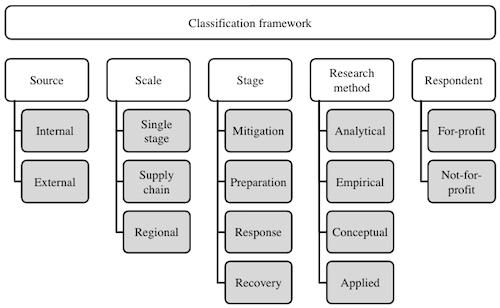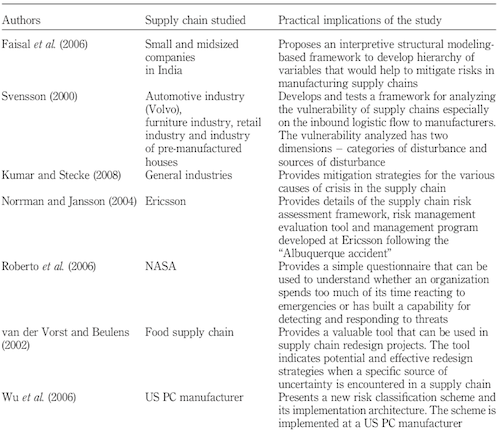Supply Chain Crisis Management
Supply Chain Risk Management is one way to look at risks within a company (and beyond). But there are broader and more narrow disciplines as well, with Business Continuity on the one end and Supply Chain Crisis Management on the other.
I wanted to get an overview of current research on Supply Chain Crisis Management first, so today I explore “Managing supply chains in times of crisis: a review of literature and insights” by Natarajarathinam, Capar and Narayanan. The article is focussed on providing the researcher with a current state of supply chain crisis management, but practitioners will probably find the “Practical Implications of SC Crisis Management” in figure 3 (below) useful.
Crisis
So how do crises fit into the Supply Chain Risk Management landscape? The authors cite Merriam-Webster on crisis, where it is defined as:
an unstable or crucial time or state of affairs in which a decisive change is impending; especially: one with the distinct possibility of a highly undesirable outcome.So in a supply chain context, a crisis is comparable to a disruption where the flow of goods, information or money is interrupted.
Methodology
The authors used an review of peer-reviewed articles as a basis for their work. For their sample they were using keywords like “crisis”, “risks”, “disaster”, “uncertainty” and more. This search resulted in 118 relevant articles published between early articles before 1990 and 2008.

Classification
As a next step the articles were classified according to the framework in the figure below.

Results
One purpose of the article was to guide future research on the topic of supply crisis management, so the authors conclude:
- Sources: More than 60 percent of the literature reviewed is exclusively concerned with external sources of risk and there is a high concentration on handling natural and man-made crises.
- Scale: Most research focusses on crises on the supply chain or regional level, so no surprise there.
- Stages: A major part of the current research is done on the proactive side, like preparation and mitigation rather than response and recovery
- Research method / Respondent: The authors conclude that “There is a need for more case studies and empirical research in crisis management for not-for-profit supply chains.”
The authors also filtered the practical implications of current supply chain crisis management research and listed them in figure 3.

Conclusion
It has been a long time since I have read such a clearly written article. I liked the presentation of the methodology. The only thing missing there would be the inclusion of non-peer reviewed journals as well considering the relatively small number of articles screened.
I found that the discussion of the term “Crisis Management” could have been more elaborate. How is the relation between Disruptions and Crisis? Are crises really just grave disruptions? If yes, is there really a need for another category here and how are the less grave disruptions called?
Natarajarathinam, M., Capar, I., & Narayanan, A. (2009). Managing supply chains in times of crisis: a review of literature and insights International Journal of Physical Distribution & Logistics Management, 39 (7), 535-573 DOI: 10.1108/09600030910996251








Add new comment